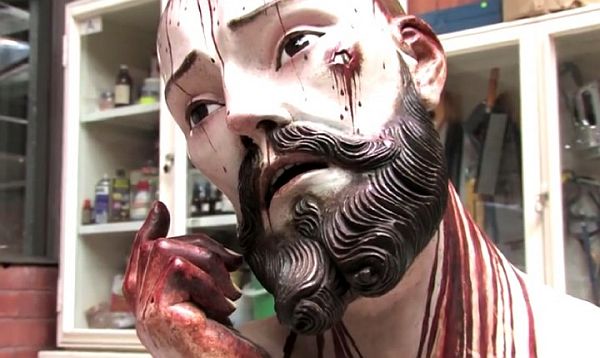Zumpango de Ocampo, Mexico - A historic statue of Christ in northeastern Mexico contains real human teeth, it has been discovered.
The "Lord of Patience" statue, in the parish of San Bartolo Cuautlalpan, is recognizable for the open wounds on its face and hands and dates back to the 18th century.
Yet specialists from the National Institute of Anthropology and History have found that the eight teeth in the mouth of the statue are real - and belonged to an adult human.
"It is common that the sculptures have teeth, but they are usually made of wood or bone carved individually or as a plate, but this case has eight teeth of an adult, you can even see to the root," said researcher Fanny Unikel, the director of Mexico's National School of Restoration, Conservation, and Museology.
"The teeth were probably donated as a token of gratitude," she added. "It's the first time human teeth have been found in a sculpture."
"The statue is a very convincing depiction, so naturally, if someone could lay hands on these kind of teeth, he would use them," Unikel said.
Speaking in a museum video, she added that despite being centuries old, the teeth are in excellent condition.
The Lord of Patience belongs to the church of San Bartolo Cuautlalpan in Zumpango. According to Unikel, the art is appreciated by members of the town.
"The sculpture only leaves the temple at Easter to tour the town. It is much appreciated by the community and it shows in the base, where there are different layers of polychrome indicating that they wanted to present with dignity," she explained.
Parishioners in various communities in Mexico are known to donated money and clothing to saints, as well as their hair to make wigs.
Original Story


